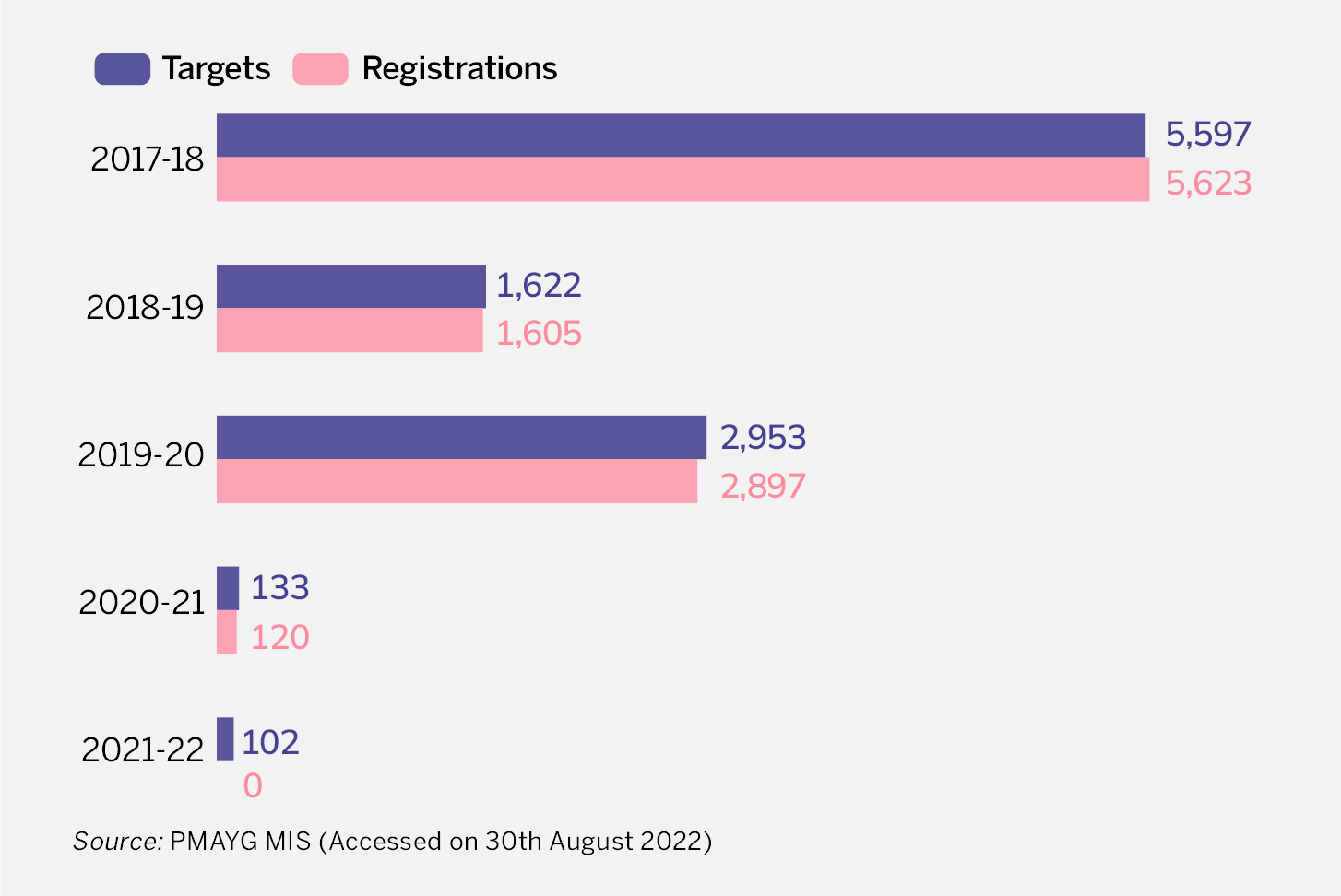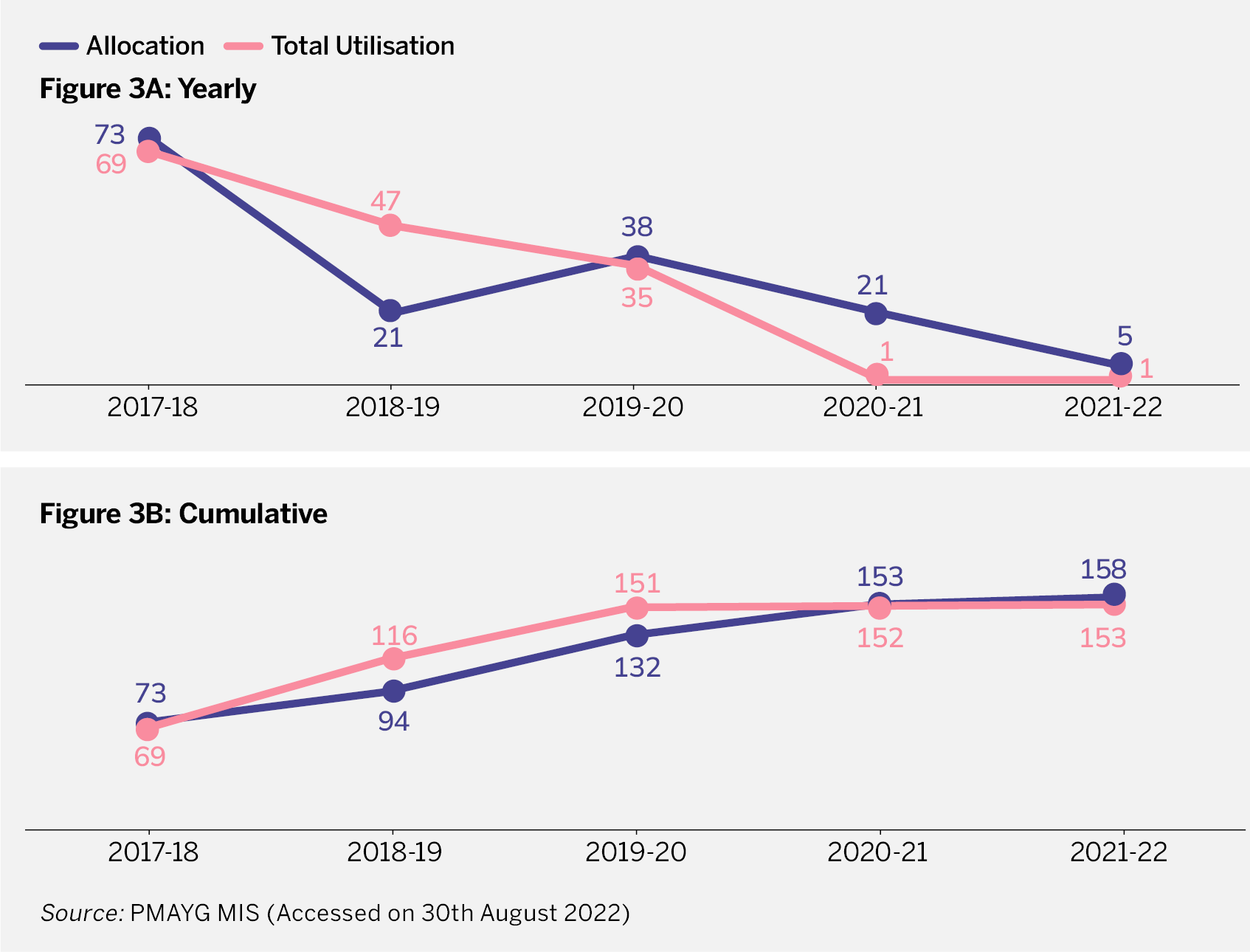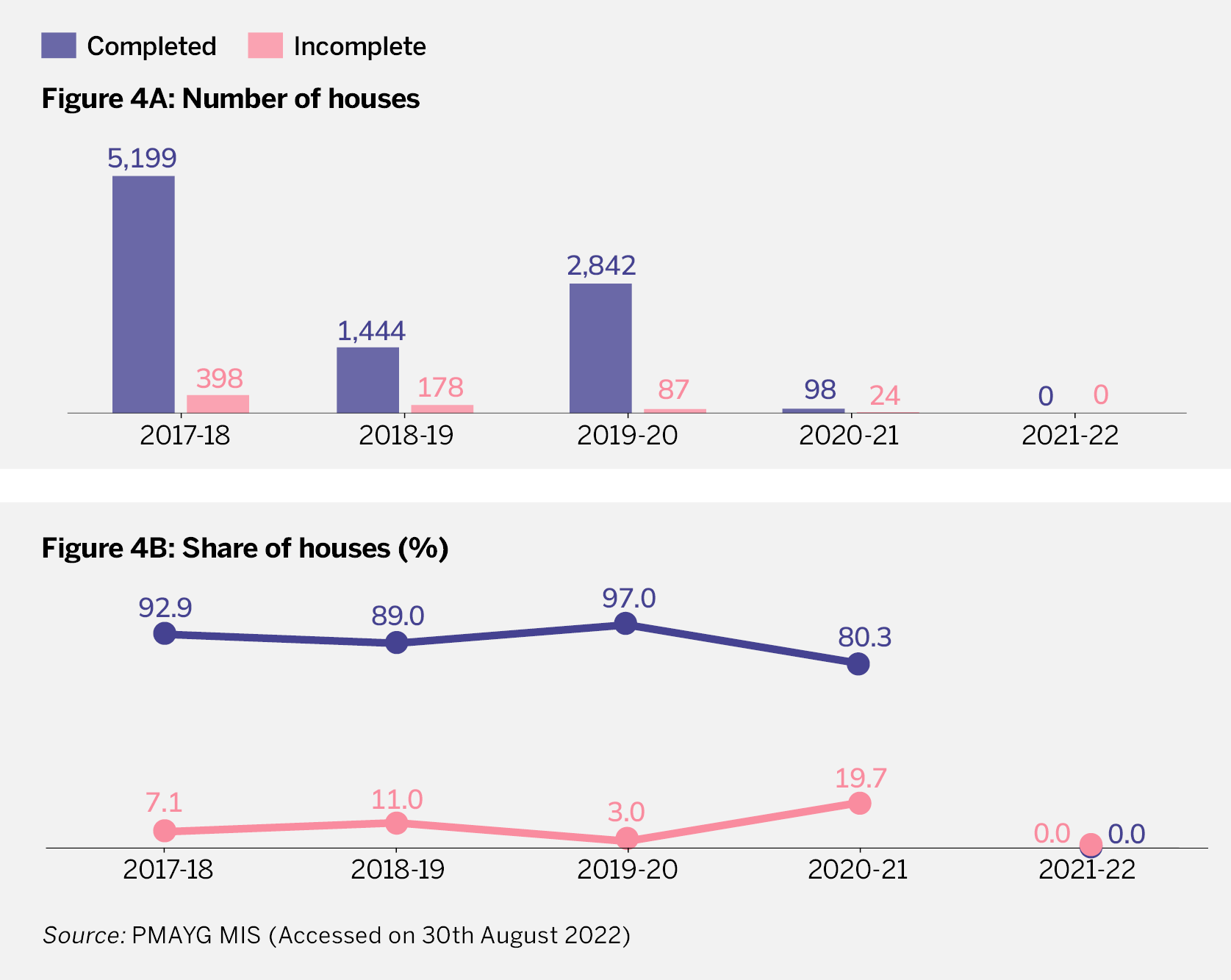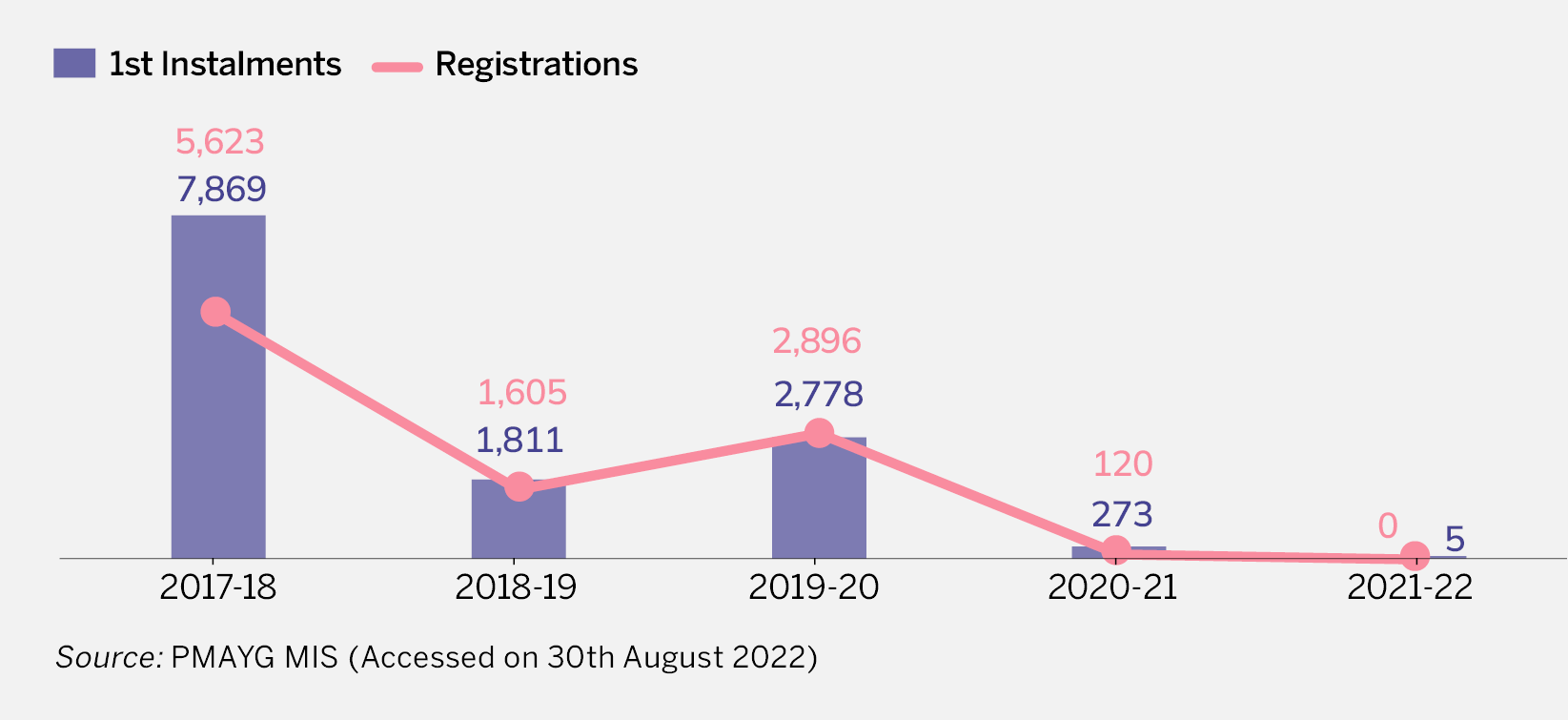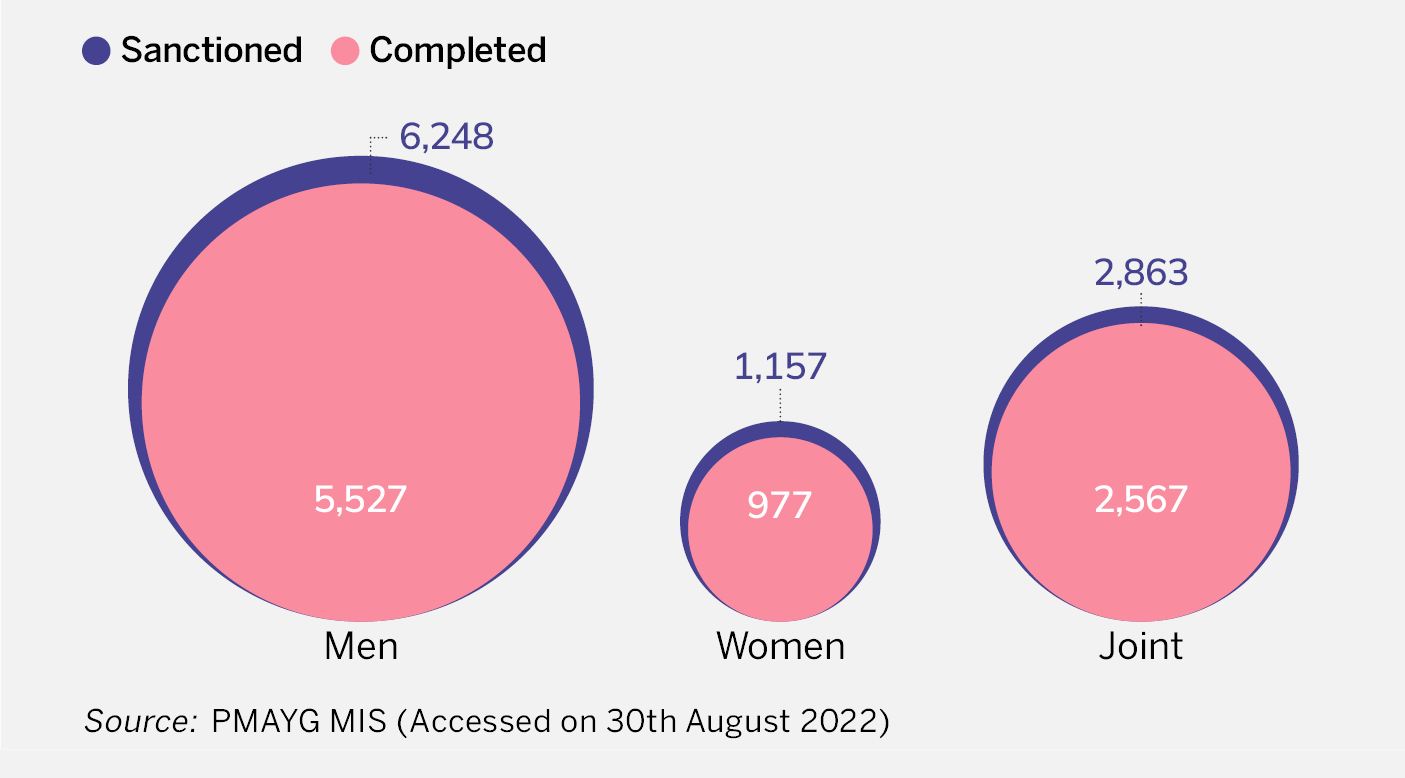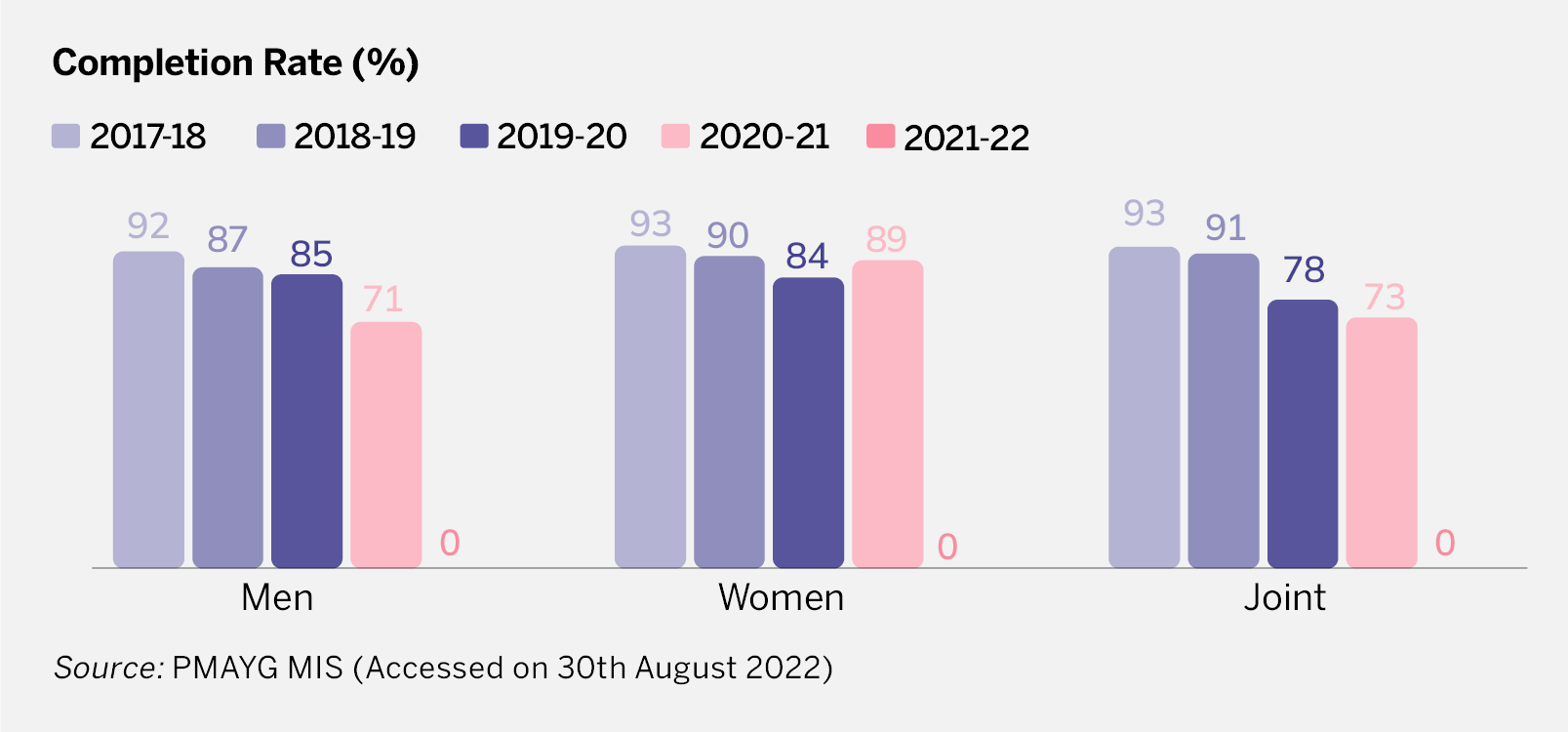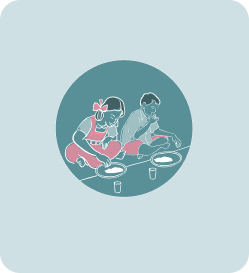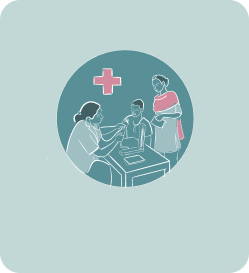01.
How has PMAY-G performed in the district?
Section titled How has PMAY-G performed in the district?The scheme was launched in FY 2016-17 by restructuring the Indira Awaas Yojana. Under the
scheme, states determine targets according to the number of beneficiaries in the district.
Eligible beneficiaries based on the housing deprivation list and priority list can register
themselves with implementing agencies. Once their eligibility is verified, a house is sanctioned
and the entire amount is deposited in instalments in the bank account of beneficiaries.
Figure 1: Overview of Beneficiaries from FY 2016-2017 till of FY 2021-22

- There is a gap of 174 between targets and sanctions indicating a registration rate of
nearly 99%. - All those who have registered have been sanctioned houses.
- 37 people whose accounts were not verified have received the first instalment. This
needs to be checked further. This could be a data error since it is very unlikely that
instalments were disbursed without account verification. - Of the total number of sanctioned houses, 91% have been completed.
- 601 houses were completed without the fourth instalment.
